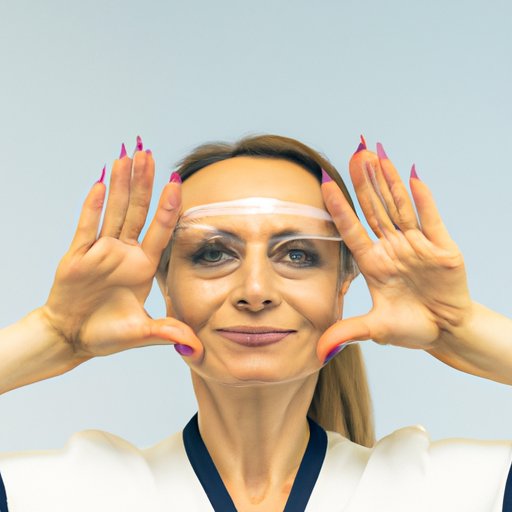Introduction
Cross-eyed, also known as strabismus, is a condition in which the eyes point in different directions. It can be caused by either a misalignment of the muscles that control the movement of each eye, or a difference in the way the eyes focus. While it is not a serious medical condition, it can cause vision problems and lead to self-consciousness.
Cross-eyed affects both adults and children, but is more common in children. According to the American Association for Pediatric Ophthalmology and Strabismus (AAPOS), approximately 4% of children aged 2-17 have some form of strabismus.
Visit an Eye Care Professional
The first step in treating cross-eyed is to visit an eye care professional. An ophthalmologist or optometrist can diagnose the condition and determine the best course of treatment. They will examine the eyes, check the alignment and measure the degree of deviation.
During the appointment, the eye doctor may also perform tests such as refraction, muscle balance, and stereoacuity. The results of these tests will help the doctor determine if the cross-eyed is caused by muscle imbalance or a focusing issue. Depending on the results, the doctor may recommend glasses, contact lenses, surgery, or vision therapy.
Wear Corrective Lenses
Corrective lenses, such as eyeglasses or contact lenses, can help reduce the symptoms of cross-eyed. Eyeglasses are the most common type of corrective lenses and can be used to correct nearsightedness, farsightedness, or astigmatism. Contact lenses can be used to correct the same conditions, but they also provide better peripheral vision and allow for more natural eye movements.
Corrective lenses can help improve vision and reduce eye strain. They can also make it easier to focus on objects, which can help reduce the appearance of cross-eyed. Additionally, they can help prevent the condition from worsening over time.
Exercise Your Eyes
Eye exercises can be used to help treat cross-eyed. These exercises involve moving the eyes in specific patterns, such as up and down, side to side, and diagonally. They can help train the eyes to move together and improve the ability to focus on objects.
Eye exercises can also help reduce the symptoms of cross-eyed, such as double vision and headaches. Additionally, they can help improve overall eye health and reduce the risk of developing other vision problems.
Utilize Visual Aids
Visual aids, such as prisms and occluders, can be used to treat cross-eyed. Prisms are special lenses that are placed over the eyes to redirect light and help the eyes focus on objects. Occluders are devices that are placed over one eye to force the brain to use the other eye to see.
Visual aids can help reduce the symptoms of cross-eyed, such as double vision and eye strain. They can also help improve vision and make it easier to focus on objects. Additionally, they can help prevent the condition from worsening over time.
Use Vision Therapy
Vision therapy, also known as orthoptics, is a form of physical therapy for the eyes. It involves exercises and activities designed to improve vision and eye coordination. These exercises can help train the eyes to work together and improve the ability to focus on objects. Additionally, they can help reduce the symptoms of cross-eyed.
Vision therapy can also help improve overall eye health and reduce the risk of developing other vision problems. Additionally, it can help prevent the condition from worsening over time.
Try Botox Injections
Botox injections are another option for treating cross-eyed. Botox injections are injections of the botulinum toxin into the muscles around the eyes. The toxin works by temporarily paralyzing the muscles, which can help reduce the symptoms of cross-eyed.
Botox injections are generally safe and effective, but it is important to consult with an eye doctor before trying them. Additionally, the effects of the injections are temporary, so regular treatments may be necessary to maintain the desired effect.
Conclusion
Cross-eyed can be a frustrating condition, but there are several treatments available to help alleviate the symptoms. Visiting an eye care professional, wearing corrective lenses, exercising the eyes, utilizing visual aids, using vision therapy and trying Botox injections are all potential treatment options. The best treatment will depend on the individual, so it is important to consult with an eye doctor to determine the best course of action.
(Note: Is this article not meeting your expectations? Do you have knowledge or insights to share? Unlock new opportunities and expand your reach by joining our authors team. Click Registration to join us and share your expertise with our readers.)
